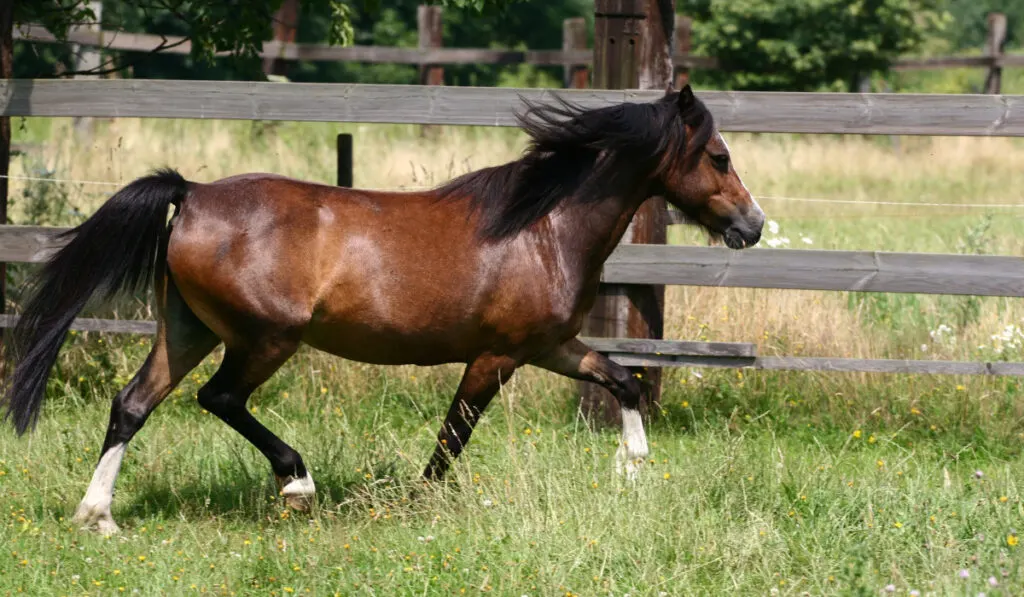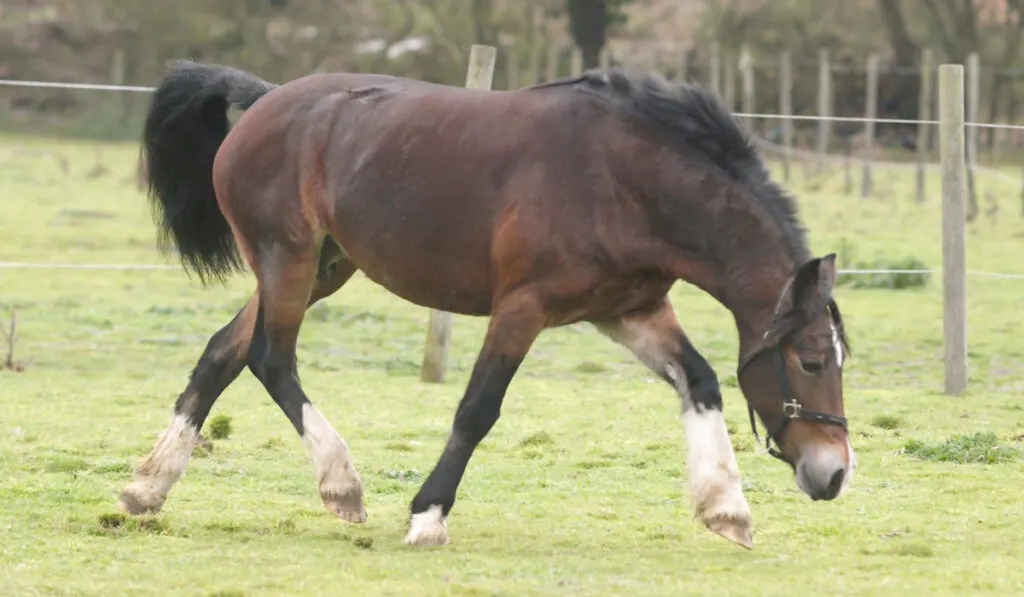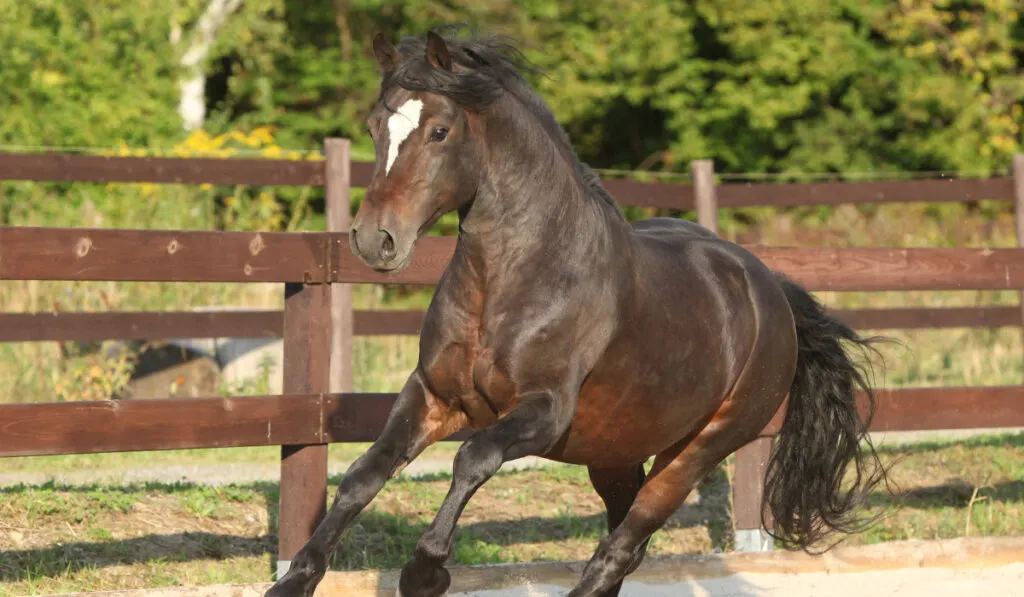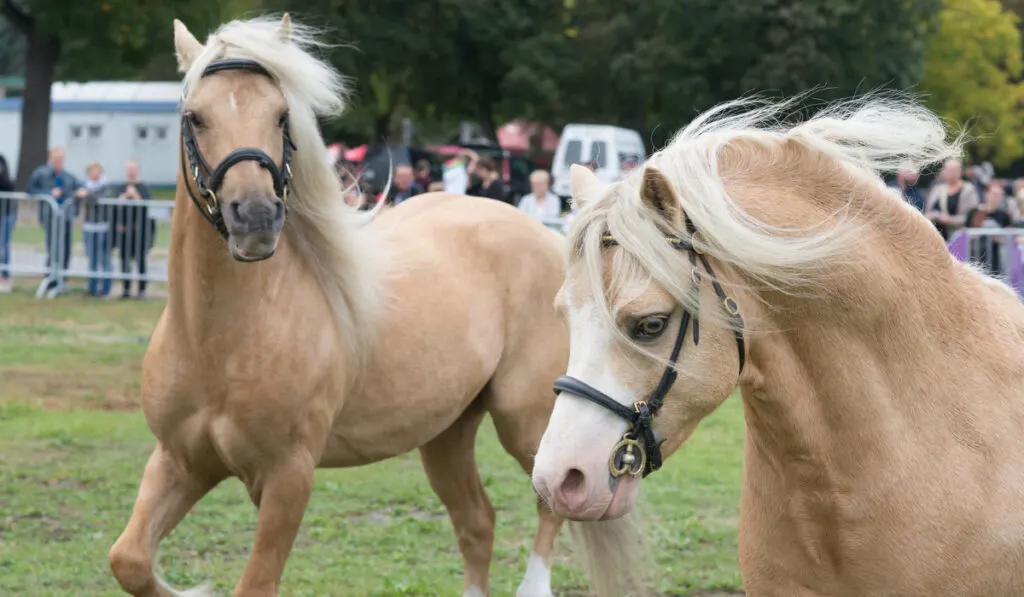Whether you are a dressage rider, an eventer, a little girl dreaming of a blue ribbon at Pony Finals or a just plain ole horse lover, chances are you have come across a Welsh pony or two. As one of the most well-known and reliable pony breeds out there, there are Welsh ponies occupying all sorts of different jobs across the United States, and all around the world.

While you read about these ponies and cob-type horses, think about all the advancements in breeding and culture that had to have taken place over the decades to give us the versatile and kind-hearted Welsh ponies we have today.
You should also be aware that Welch pony carrying capacity is pretty impressive.
The Beginning – How the Welsh Pony Came to Be
The Welsh pony started out in Wales, a country in the southern half of the United Kingdom. The earliest traces of the Welsh pony come from the Middle Ages, and it is understood that they originated from crossing the native ponies of Great Britain with the Arabian and Hackney horses. (source)
These ponies lived a pretty gnarly life in their earliest days in Wales. According to The Welsh Pony & Cob Society of America, They traveled through the deepest valleys, highest hills and roughest terrains of Wales, and were given all the jobs- driving, plowing, riding, you name it. (source)
Over time they adapted to and eventually thrived in the rough conditions of the country, which eventually molded the well-rounded Welsh pony with great soundness and temperament we have in the U.S. today.
The breed made its way to the states in the early 1900s, and over time made the jump from work horse to riding horse. As they adapted to the changes in their new environment, their stature, strength and personalities changed with it.
Even the broadest and burliest of the ponies started to become leaner and less bulky in order to better perform in their new jobs.
Shortly after in 1901, the Welsh Pony and Cob Society of America was founded. To make it easier to understand the ins and outs of these ponies, the founders of the WPCSA decided to break down the breed into four different sections divided by height, purpose and characteristics.

Keep in mind that every different ‘variation’ of this pony is still the same breed, originating from the same place, designed to do the same kind of jobs.
Over time the looks and behavioral patterns of these ponies have changed but these are some of the characteristics that stayed solid and will help you tell these ponies apart. Let’s break it down:
Types of Welsh Ponies
| Section A – Welsh Mountain Pony | Section B – Welsh Mountain Pony | Section C – Welsh Pony of Cob Type | Section D – Welsh Cob |
| Height: 12.2hh max | Height: 14.2hh max | Height: 13.2hh max | Height: Over 13.2hh |
| Good child/beginner pony. Excels in pleasure riding, trail riding, driving, harness, jumping. | Excellent riding pony. Ideal pony for jumping and competition riding. | Originally bred to be a workhorse. Naturally courageous and hard-working. | Originally bred to be a workhorse. Hunting, harness and driving horses. Great stamina. |
| Small head, bold eyes, short back, strong hindquarters. | Small head, symmetrical ears, solid bone structure and hardiness. | Hardy. Heavy build. Built strong and sturdy for work and rough conditions. | Can be either horse or pony sized. Strong, muscular, dense hooves. |
One thing stays the same across the board for all four sections of Welsh pony: they are reliable, hard-working and extremely versatile. In the U.S., we see all four sections in both work and competition.
Section A and Section B types will most likely be seen around the competitive jumping scene, whereas Section C is by far the rarest of the four sections. Little fun fact: Section C ponies possess the best attributes from both the pony and the cob (source).
When looking at the table, you’ll realize that Section A, B & C Welsh ponies all stay under the official pony height of 14.2 hands. Section D is the only variation of Welsh who can venture into the horse category, as they can grow as tall as 15 hands (source).
Gotcha, but What’s a Cob?

It can start to seem like ponies and cobs go hand in hand when you hear people refer to them. You often hear the two spoken about together whether it be height, weight or build, you may have realized most ponies wind up fitting into cob-sized tack, and maybe you’re a little confused as to why these ponies have two different names. Yeah, I feel ya- this stuff can get tricky!
The most important thing to remember here is that a Welsh pony can be a Welsh pony without being a cob, and a cob can be a cob without being a Welsh pony.
A Welsh pony (sometimes even just referred to as a Welsh Cob) is a breed of horse with its own history and ancestors. However, a cob is not a breed but a type of horse. It describes the look, build and characteristics of certain horses.
The word cob originated in the United Kingdom thousands of years ago and has made its way over to the U.S., just like the horses themselves. Originally the term cob referred to a big, strong man but in our world seems to have slowly changed its meaning to mean ‘big, strong horse’ (source).
Naturally, cob horses outshine any other type of horse when it comes to plowing, pulling, driving, hiking and mining because of the way they are bred. Born take on a heavy workload and thrive in less-than-perfect conditions, there’s no horse more reliable or better suited to do such work.
A horse of that composition may not succeed in competition riding due to their size and stature, but it seems logical that their solidity and courage might give them a fair shot at it.
They Came, They Saw, They Conquered
Now hundreds of years since arriving in the U.S. and thousands of years after first being bred, Welsh ponies have proven to be capable of adapting to just about anything.

From plowing and driving to leisure riding and jumping, from rough terrain & high stress to living in a heated 12×12 stall waiting on your hefty scoop of grain for dinner…I’d say these ponies have made it pretty dang far. They have adapted to the tasks their riders, farmers, and trainers have pressed upon them since arriving in the United States.
Some of the most successful ponies in the current competition world are Welsh ponies or Welsh mixes. The Pony Hunters, a prestigious English-riding show division where ponies are judged on their fluidness, fanciness, and handiness, may be the No.1 hotspot for Welsh Ponies.
Take a look at the official results of Pony Finals over the last few years and you’ll have no problem finding some of the top Welsh ponies in the game (2019 USEF Pony Hunter Final Results).
Welsh ponies & cobs have made a lasting impression on riders of all disciplines, farmers, and drivers. These ponies are generally sound, healthy, and resistant to disease because of their great ancestry. They are versatile and trustworthy, making great companions for beginner riders and childrens.
There has only been an increase in demand for these ponies as time has gone on. Currently, many Welsh ponies are making a big splash in the dressage ring and the lower-level eventing scene. If you are interested in buying one of these ponies, make sure to do your research and find the best section of pony suited for you!
Resources
- Official 2019 Pony Hunter Finals Results https://www.usef.org/forms-pubs/x8jiiDFtvlc/2019-full-results
- Welsh Pony & Cob Association of America https://wpcsa.org/
- Welsh Pony & Cob Breed Profile https://www.thesprucepets.com/meet-the-welsh-pony-and-cob-1886141
- What Is A Cob? https://good-horse.com/genetics-evolution/what-is-a-cob/

